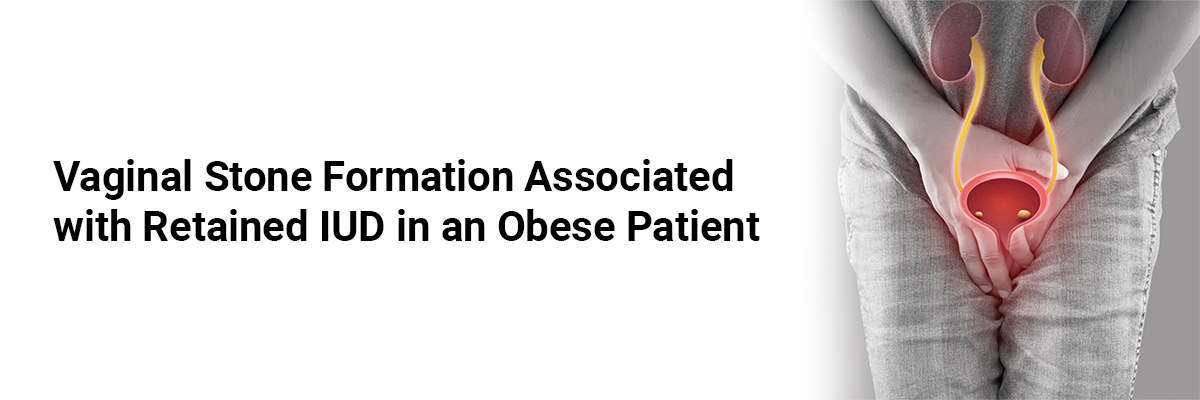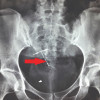
 IJCP Editorial Team
IJCP Editorial Team
Vaginal Stone Formation Associated with Retained IUD in an Obese Patient
A 59-year-old woman with a BMI of 72 kg/m² sought treatment at a community hospital for sudden, severe vaginal pain. Examination revealed a large, textured mass in her vagina, but due to equipment limitations, she was transferred to a tertiary medical center. Her medical history included several conditions such as hypertension, diabetes, and chronic kidney disease, and she had a history of stage II pelvic organ prolapse and frequent urinary tract infections (UTIs).
In the emergency room, a physical exam was conducted using a bariatric stretcher, during which a 4 cm, hard mass was discovered and manually extracted, revealing a copper intrauterine device (IUD) encased in a calculus. The calculus was identified as struvite and weighed 40 grams. The patient had had the ParaGard IUD inserted 20 years prior, with multiple unsuccessful removal attempts due to anatomical challenges associated with her obesity.
The present case illustrated the formation of a vaginal stone in a patient without typical genitourinary abnormalities, primarily attributed to her morbid obesity and a retrograde flow of urine due to incontinence. The alkaline environment from her recurrent UTIs likely contributed to the stone formation around the IUD.
This situation underscores the need for awareness of vaginal stones in gynecological evaluations, the importance of following up on incidental imaging findings, and the necessity for regular gynecological care, particularly in obese patients. In addition, IUD removal might be crucial in preventing complications like vaginal stone formation in women with urinary incontinence.
In conclusion, this case represents the rare complications of retaining an IUD in obese, recumbent women and emphasizes the importance of providing equitable and thorough healthcare, even when facing challenges in patient care.
Source: Silverstein RG, Patnam R, Thornton M. Vaginal stone formation around intrauterine device in an ambulatory woman with morbid obesity. J Case Rep Images Obstet Gynecol 2022;8(2):45–48.

IJCP Editorial Team
Comprising seasoned professionals and experts from the medical field, the IJCP editorial team is dedicated to delivering timely and accurate content and thriving to provide attention-grabbing information for the readers. What sets them apart are their diverse expertise, spanning academia, research, and clinical practice, and their dedication to upholding the highest standards of quality and integrity. With a wealth of experience and a commitment to excellence, the IJCP editorial team strives to provide valuable perspectives, the latest trends, and in-depth analyses across various medical domains, all in a way that keeps you interested and engaged.












Please login to comment on this article